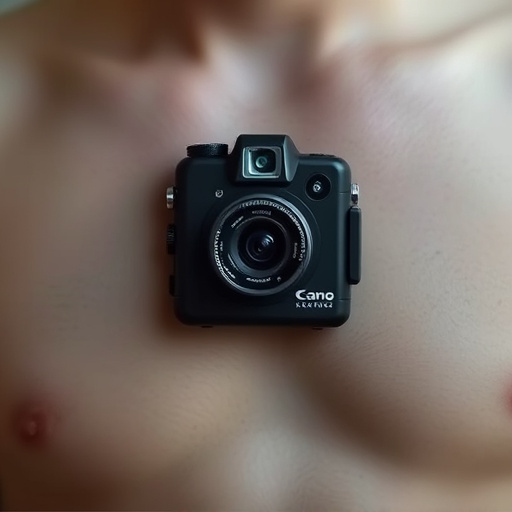Hidden personal body cameras, discreet wearable surveillance devices, offer high-quality video and audio recording with wireless connectivity and long-lasting batteries, capturing intimate details responsibly. They enhance safety in public spaces and document authentic moments, from travel adventures to personal milestones. Types include clip-on and vest/backpack-mounted cameras with diverse features like night vision, motion detection, GPS tracking, and advanced sensors. Balancing legal and ethical considerations, such as obtaining consent and respecting privacy rights, is crucial for responsible use in both public and private settings.
Discover the power of hidden personal body cameras – tiny, discrete devices that capture unseen moments. This comprehensive guide explores their role in enhancing safety and documenting experiences. We delve into legal considerations, privacy concerns, and the various types and features available. Learn best practices for using these innovative tools responsibly, empowering you to make informed decisions about when and where to deploy them. Understanding hidden personal body cameras has never been more crucial.
Understanding Hidden Personal Body Cameras: A Comprehensive Overview
Hidden personal body cameras, also known as wearable surveillance devices, have gained significant attention in recent years due to their ability to provide a first-person perspective and capture intimate details of one’s environment. These compact, discreet cameras are designed to be worn on the body, offering users a unique way to record personal experiences, document everyday life, or even serve as a security measure. With advanced technology, these devices offer high-quality video and audio recording capabilities, making them versatile tools for various purposes.
Understanding how hidden personal body cameras function involves grasping their design, which typically includes a small, lightweight camera unit attached to clothing or accessories. They are designed to be easily portable, often featuring wireless connectivity and long-lasting batteries. The primary advantage lies in their ability to capture authentic, unfiltered footage of events as they unfold, making them invaluable for personal use, security, journalism, and even law enforcement applications.
Legal Considerations and Privacy Concerns
When considering the use of a hidden personal body camera, it’s crucial to understand the legal considerations and privacy concerns that come into play. In many jurisdictions, there are strict regulations governing the use of surveillance technology, including wearable cameras. Laws vary widely by region, but generally, capturing video or audio without explicit consent can be illegal. This is especially true in public spaces where expectations of privacy are high.
Privacy is a paramount concern for individuals considering hidden personal body cameras. These devices capture intimate details of everyday life, from conversations to interactions with others. It’s essential to respect the privacy rights of everyone involved and ensure that any recordings are used responsibly and ethically. Informed consent from all parties should be obtained before activating such devices, especially in public settings where bystanders may not expect their activities to be recorded.
Benefits: Enhancing Safety and Documenting Experiences
A hidden personal body camera offers a multitude of benefits, most notably in enhancing safety and documenting experiences. By discretely capturing high-quality video footage, individuals can protect themselves in various situations. This is especially valuable in public spaces where unexpected incidents can occur, providing tangible evidence that can aid in investigations and ensure accountability.
Moreover, these cameras allow users to relive memorable moments and significant events. From travel adventures to personal milestones, having a hidden body camera enables one to capture the essence of experiences untouched by traditional photography. It offers an authentic perspective, preserving details that might otherwise be overlooked or forgotten, making it a powerful tool for documenting life’s precious tales.
Types and Features of Hidden Body Cameras
Hidden personal body cameras have evolved significantly, offering a range of options for individuals seeking discreet recording solutions. These devices are designed to be small and easily portable, allowing users to capture unguarded moments without raising suspicion. One of the most common types is the clip-on camera, which can be attached to clothing or accessories, remaining nearly invisible to the naked eye. These cameras often feature HD video quality, night vision capabilities, and motion detection for efficient recording.
Another popular variation is the vest or backpack-mounted camera, providing a more comprehensive field of view. Ideal for professionals in fields like law enforcement or security, these hidden cameras can capture high-resolution footage with advanced sensors, ensuring clear images even in challenging lighting conditions. Many modern models also include GPS tracking and long-lasting batteries, enabling continuous surveillance over extended periods.
Best Practices for Using a Hidden Personal Body Camera
Using a hidden personal body camera comes with unique opportunities and responsibilities. To ensure legal and ethical compliance, it’s crucial to establish clear guidelines for its use. Firstly, familiarize yourself with local laws regarding hidden cameras; consent is often required in public spaces. Respecting privacy rights is paramount, so only record when necessary for safety or evidence purposes. Secondly, inform those around you that you’re recording; transparency builds trust and minimizes potential legal issues. Keep recordings secure and only share them with relevant parties when needed. Regularly review and update your usage practices to maintain a responsible and lawful approach.
When deploying the hidden personal body camera, focus on clear and concise footage. Ensure the camera has good visibility and is secure on your person. Aim to capture vital details like dates, times, and locations for accurate context. Maintain regular storage backups to prevent data loss. Additionally, consider purchasing a camera with adequate memory or cloud storage options. Lastly, remain aware of your surroundings; while hidden, the camera still needs thoughtful placement to avoid capturing sensitive areas or compromising security measures.
